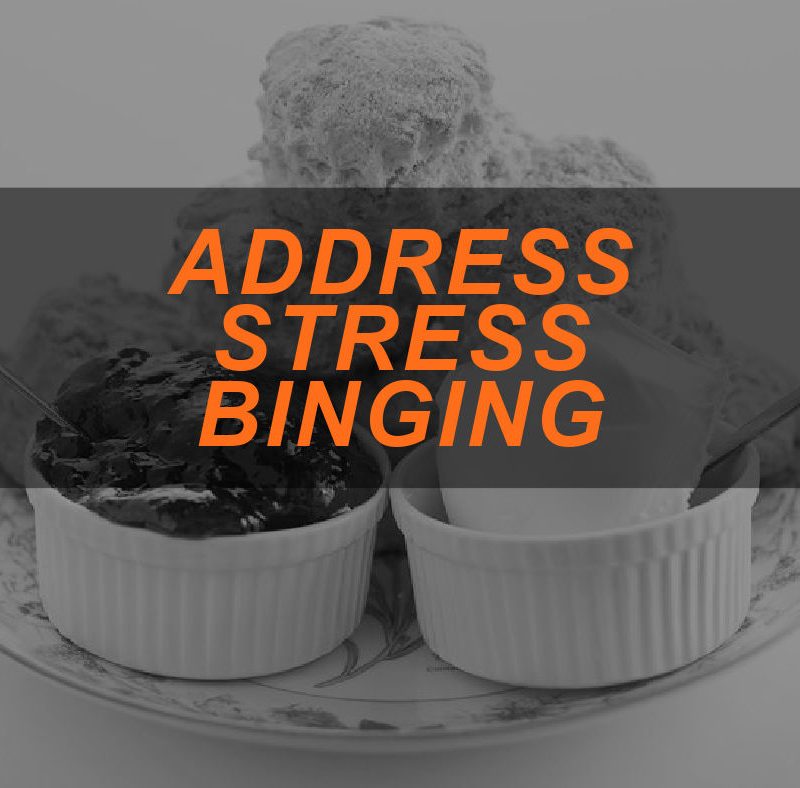
The COVID-19 pandemic hit our world and industry with an unexpected force. As a result, most businesses/jobs found ways to work remotely as social distancing became the go-to recommendation. Schools delivered lessons online/virtually. Gyms and studios were forced to close, and health and exercise professionals took their businesses online to continue to serve their clients. Stress binging took on a whole new meaning as the entire world seemed to collectively gain weight.
Despite the efforts made, most everyone still experienced an enormous increase in stress and a significant decline in mental health. With guidelines loosening and mandates becoming a think of the past, we are moving toward a more positive outlook in terms of the pandemic and its impact. However, a “return to normal” has many of us feeling a little less in control than anticipated. Our clients fall victim to this as well and, as a result, turn to one of the most natural forms of comfort – food. Help your clients normalize the message that stress is normal, and that it can be managed and handled effectively. Try these tips the next time a client of yours falls short of a nutrition goal due to stress.
Hunger vs. Appetite
Start here, by educating your clients about the difference between hunger and appetite.
Hunger is a physiological need for food and serves as a signal from the body that we need to get some fuel on board. The body (and brain) cannot optimally function without food (energy).
Appetite, in contrast, is a psychological want for food. This is generally brought on by the site of food or smell of food. In addition, appetite can be triggered during times of stress, which can lead to a binge eating episode.
Exercise and lack of quality/consistent sleep also ignite the want for food. Exercise can trigger this sense of “well, I worked for these calories, so I’m going to replace them.” Clients (and you) do NOT need to earn your food. Getting caught in this cycle can also lead to episodic indulgences that move clients further from their goals. With a lack of sleep, the body (and brain) crave quick energy to help us feel awake, which can lead to binging on simple carbs and sweet food items (and later regretting it).
This (among many other reasons) is why it’s so important to work with clients to bring balance to their lives so that they prioritize all dimensions of their overall wellness – not just the physical aspect.
Consequences of Binging and Tactics for Overcoming (and Preventing) It
During episodic binging, clients often feel frustrated and aggravated at themselves (the “I’m a failure” mentality). To compensate for a high caloric binge, there’s a tendency to skip one or two meals to “make up for” the overconsumption. This cascade event leads to feelings of self-blame (I have no willpower or ability to control myself), which isn’t helpful, or solution-focused.
Instead, we can help clients employ other more mindful tactics to help them confront and overcome occasional situations like this. Help clients devise a 3-step plan for the next time stress comes at them full force.
- Take two minutes to breathe (box breathing is a great technique to share).
- Drink a small glass of water (or other noncaloric beverage).
- Reflection on what is causing these feelings of stress. What is leading to this potential episode? Many find it helpful to journal or use an app to record their feelings and emotions. Encourage a self-monitoring technique that works for your clients on an individual level. This gives the client an opportunity to identify what they can do if the next time threatens to occur.
Encourage clients to keep their 3-step plan in sight and readily accessible so that when stress starts to appear, they can have a go-to place to enact the plan you helped them devise.
The Big Four Lessons
Our clients are human, and they are subject to fluctuations in stress and emotional messages they experience. As an instinct, we all look for an immediately employable coping mechanism and sense of comfort when we feel stressed or “undone”. Often, this means an indulgence in some less-than-optimal food source or meal. You can help keep clients on track by teaching them “the big four”.
- What fuel the human body needs to function optimally
- What factors affect hunger and appetite
- How to make intentional food choices
- How to align food choices with the goals your clients have
We cannot be with our clients 24/7/365. But we can influence their relationship with food, provide them with useful and strategic tools that can aid them in their journey of change, and help them overcome the struggles they are likely to face along that journey.






